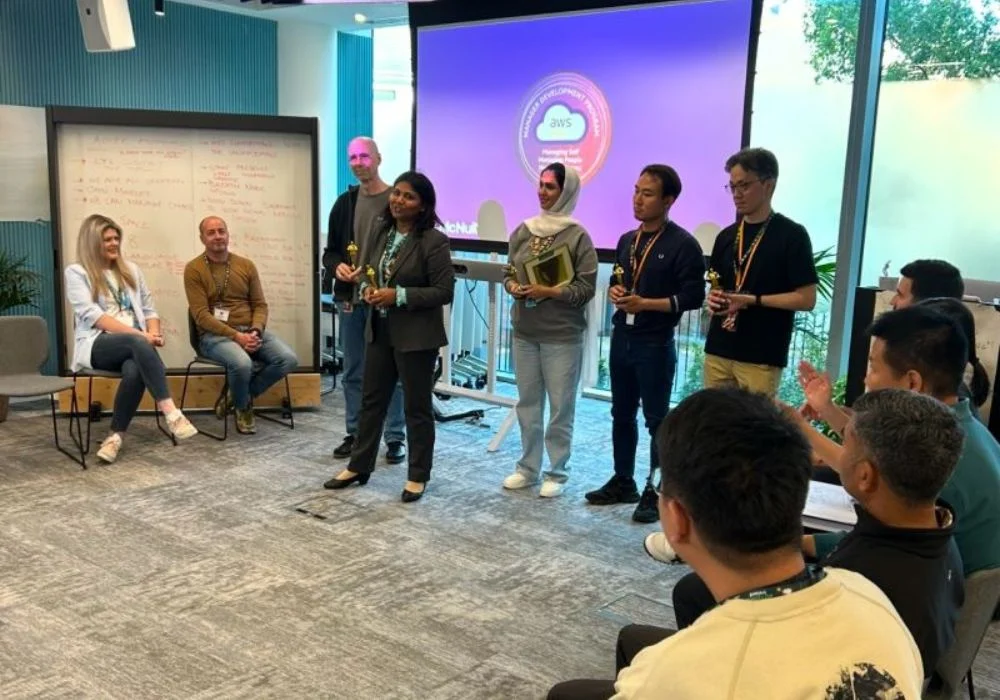With the dramatic shift in recent years towards an always-on, always-connected way of working, not to mention the major pivot to remote work during the Covid-19 pandemic, it’s time to adopt a fresh approach. We prefer the term: work-life Integration.
Work-life balance is a binary approach where one aims to set boundaries on their time to ensure an equal balance between two competing elements: work and life. We’ve all probably heard of the incredible importance achieving a good work-life balance holds in maintaining our happiness and wellbeing. To a certain extent, this is absolutely true; living a balanced life is vital to ensuring you are a content and well individual. Our minds and bodies need rest from work to recharge. But there’s a problem. The term work-life balance is almost always framed as some sort of good-vs-evil war of time, where work is a villain competing with life and to defeat it is to balance it out with an equal amount of ‘good’ non-work time. It tends to forget the benefits to our wellbeing that work can bring, like connections and relationships, meaning, purpose and accomplishment: check any list of necessary factors for happiness and wellbeing and you’ll see these aspects are critical points.
Work-life balance has been an extremely popular concept in recent times, given the context of the Covid-19 pandemic which threw a major spanner in the works. Boundaries between traditional working hours and time-off has been blurred as we pivoted to working from home. It is becoming more and more difficult to separate work from life in this virtual, always-on, always connected way of working. This has been a concern for several years now, even before the pandemic began; being connected with work long after the end of the working day, emails and messages after hours or at the weekends. How can one, in this modern way of working, set up effective and meaningful boundaries needed for a work-life balance? It begs the question, is the work-life balance approach out-dated?
We much prefer the term work-life Integration. As Stewart Friedman of the Wharton Business School Work/Life Integration Project says: ‘The idea that “work” competes with “life” ignores that “life” is actually the intersection and interaction of four major domains: work, home, community, and the private self.’ Work life integration is not about achieving a binary balance between work and life, it is about acknowledging that work is a critical part of life and striving for harmony between those four major parts of life. Friedman explains that the work-life balance approach encourages a trade-off mindset; that to excel in one requires sacrifice in the other. To be successful at work requires your ‘life’ to suffer. He suggests that this doesn’t need to be the case. By looking at the situation differently, from a point of view of harmony rather than balance, one can find ways to make life better in all four domains. Instead, Friedman developed the concept of Total Leadership to assist individuals in finding more strategic ways of integrating work with the rest of their life.
‘To be real is to act with authenticity by clarifying what’s important to you…To be whole is to act with integrity by recognizing how the different parts of your life affect each other. All this examination allows you to be innovative. You act with creativity by experimenting with how things get done in ways that are good for you and for the people around you.’
It all sounds great, but how can you implement this in your own life? Start by being ‘real’. Identify what’s important to you and what areas of the four domains you want to prioritise in an exercise of self-examination. What areas do you need to focus on; it may be you put a lot of resources into work and feel cut-off from your social network. Perhaps you invest a lot of resources in your community life and need to re-focus effort into a work project.
Be ‘whole’; identify how each domain of your life interacts and identify how you best integrate these. Perhaps the four domains are in harmony when you work remotely, or when you are given licence to work to a flexible schedule; communicate these with your employer. Find what ways of integrating the work, home, community and the self parts of your life works for you and implement that as much as possible. Be ‘innovative’; it will be trial and error and take some experimentation to find what works and how best to navigate. Test different ways of having these domains work in harmony to discover what benefits your life the most.
Critically, prioritize being flexible. Get out of that binary way of thinking and tear down those boundaries between work time and everything else. Identify how you can maximise your time to blend aspects of all four domains. Can you schedule your workouts for that gap between meetings? Can you implement a flexible working week, outside of the traditional 9-5, to bring your kids to work in the morning or cook family dinners in the afternoon? Play around with your schedule to be flexible and intuitive so that your days consist of activities that nourish all four domains to achieve that harmony and integration.
At the end of the day, it’s not about aiming for the perfection of an equal balance. That’s impossible. If you can learn to integrate the major aspects of your life to work in harmony, it will go a long way to being your best possible self every day.




